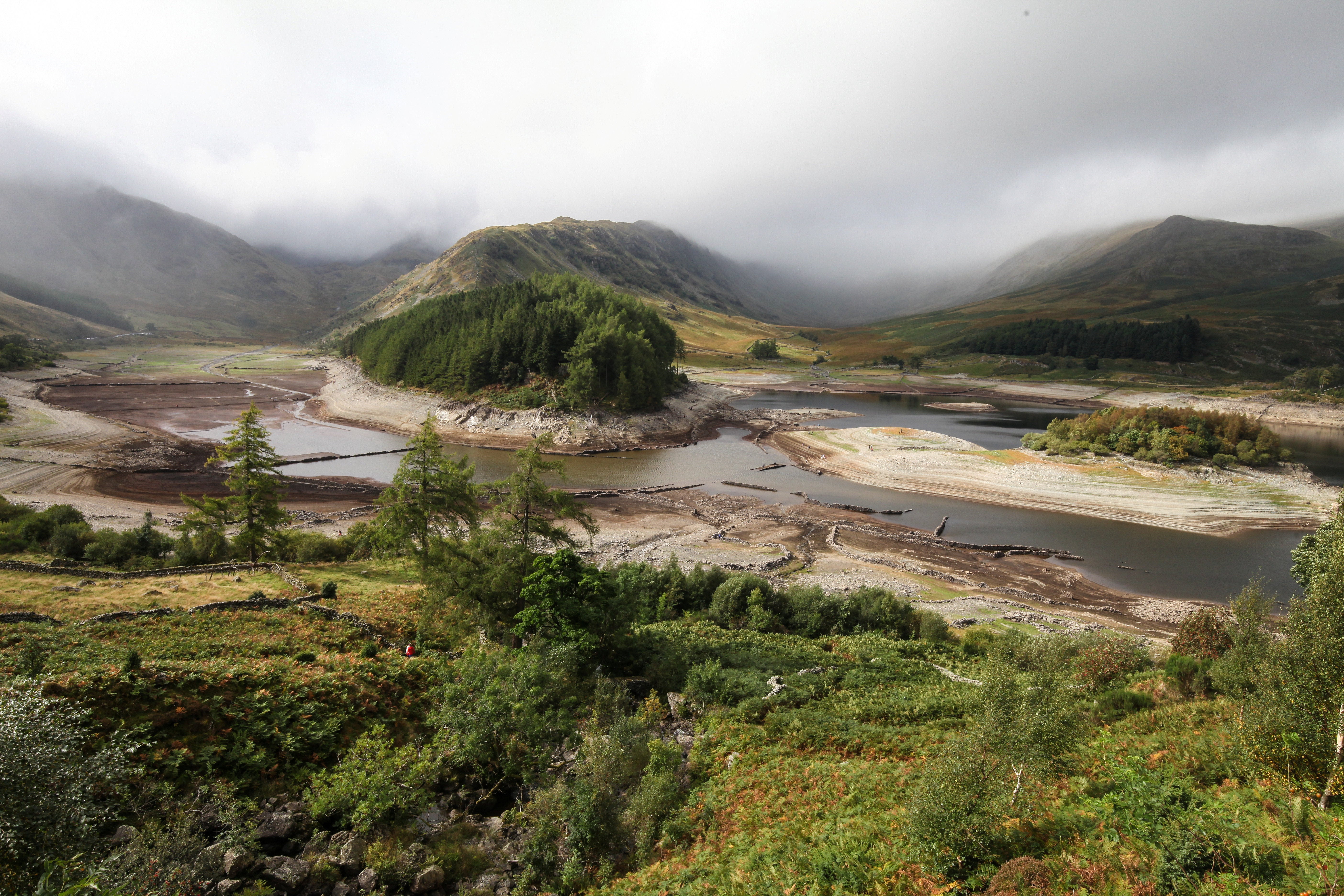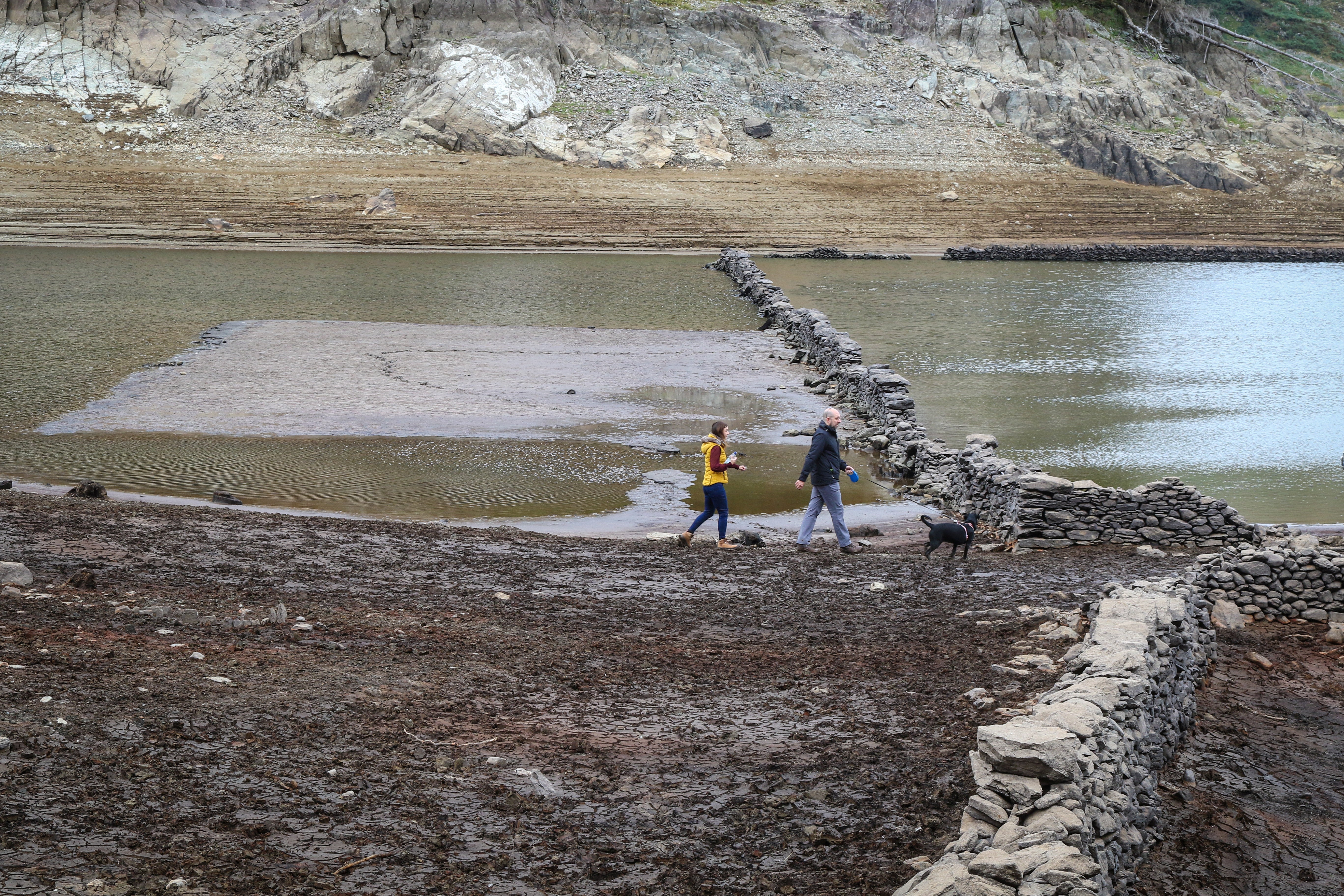‘Lost village’ in Lake District re-appears after water levels drop
Hundreds of villagers were turfed out of their homes and most of the buildings were blown up by Royal Engineers who used them for demolition practice

Your support helps us to tell the story
From reproductive rights to climate change to Big Tech, The Independent is on the ground when the story is developing. Whether it's investigating the financials of Elon Musk's pro-Trump PAC or producing our latest documentary, 'The A Word', which shines a light on the American women fighting for reproductive rights, we know how important it is to parse out the facts from the messaging.
At such a critical moment in US history, we need reporters on the ground. Your donation allows us to keep sending journalists to speak to both sides of the story.
The Independent is trusted by Americans across the entire political spectrum. And unlike many other quality news outlets, we choose not to lock Americans out of our reporting and analysis with paywalls. We believe quality journalism should be available to everyone, paid for by those who can afford it.
Your support makes all the difference.A ‘lost village’ in the Lake District which vanished when a valley was flooded to create a reservoir in the 1930s has dramatically re-appeared due to falling water levels.
Haunting photos show remnants of Mardale Green in Cumbria, including a 17th-century humpback bridge and the outline of its streets.
What was the main road through the village can be seen as well as ruins of the old buildings including an old church, pub and house.
The farming village was evacuated in 1935 and made into Haweswater reservoir to supply the North West of England with water.
Hundreds of villagers were turfed out of their homes and most of the buildings were blown up by Royal Engineers who used them for demolition practice.
United Utilities, which owns the reservoir, says it is currently about 40 per cent full, when normally they would expect it to be at 70 per cent in September.
The firm blamed extra water demand as more people took staycations.
A spokesman said: “Whatever the weather we always ask our customers to use water wisely, and this is a timely reminder that it is a precious resource.
“Reservoirs always tend to be at their lowest at the end of summer ahead of the winter refill, however, some are lower than we’d expect.
“Although May was wet, summer was drier than usual, particularly in the Lake District where we have some of our major water sources.
“We have also been supplying more water than usual due to the pandemic, as more people have been working from home and taking holidays in the region.”
Read more: Best Lake District hotels

Mardale Green makes a re-appearance every few years, when the water level in the reservoir is below 50 per cent.
The last time it was so well visible was in 2018 and it happened in 2014 before that.
In both cases, as in part with this instance, the lower water level was due to a very hot, dry summer.
This year, despite a dry summer, the wet May should have been enough to keep levels up.
However, when the dry summer was combined with increased demand from staycationing and working from home, it pushed it to just 40 per cent capacity.
The usual depth of the reservoir is between 68ft and 101ft, but in the last 12 months it has dropped as low as 49ft, putting a strain on water supplies.
The reservoir provides about 25 per cent of all water to homes in the North West.
It comes after the firm urged millions of people in Greater Manchester to reduce their water consumption because nearby Thirlmere reservoir is almost dry too.
In an email to customers earlier this month, they urged residents to spend less time in the shower to help with the water shortage.
They said: “We wanted to let you know that the reservoirs and water sources which supply your local area are much lower than we would like them to be for this time of year.
“So, it’s really important that you do all you can to save water.
“A simple way to make a big impact is to spend just one minute less in the shower – that’ll save 12 litres a day, enough for 48 cups of tea.”
Join our commenting forum
Join thought-provoking conversations, follow other Independent readers and see their replies
Comments